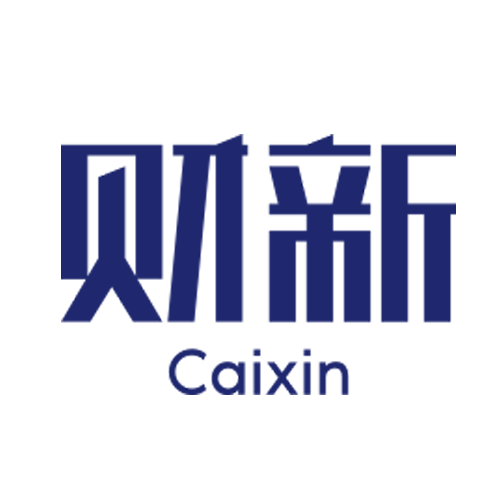Caixin Weekly | Expansion of Panda Bonds (AI Translation)
Listen to the full version


文|财新周刊 王小青 发自香港
By Caixin Weekly’s Wang Xiaoqing, reporting from Hong Kong
文|财新周刊 王小青 发自香港
By Caixin Weekly's Wang Xiaoqing, reporting from Hong Kong
作为境内小品种的熊猫债,2024年发行规模有望突破2000亿元水平,连续两年创下发行金额新高。
As a niche financial instrument within China, the issuance of Panda bonds is expected to surpass 200 billion yuan in 2024, marking a record high for the second consecutive year.
所谓熊猫债,是指境外机构在中国境内债券市场发行的人民币计价债券。发行主体包括四类,分别是外国政府类机构、国际开发机构、境外金融机构和境外非金融企业。熊猫债大多发行在银行间债券市场,2023年占比约达93%,交易所市场亦有少数发行。
Panda bonds refer to renminbi-denominated bonds issued by foreign institutions in the Chinese domestic bond market. Issuers can be categorized into four types: foreign government agencies, international development institutions, foreign financial institutions, and foreign non-financial enterprises. Most Panda bonds are issued in the interbank bond market, accounting for roughly 93% of the total in 2023, with a small portion issued in the exchange market.

- DIGEST HUB
- Panda bonds, RMB-denominated bonds issued by foreign entities in China, are expected to surpass 200 billion yuan in 2024, marking a record high.
- The increasing interest in Panda bonds is driven by regulatory improvements and favorable RMB financing costs, with Deutsche Bank and NWS Holdings among the active issuers.
- The market is diversifying, with issuances from foreign institutions on the rise and broader regulatory support facilitating more market-oriented issuance.
Panda bonds, which are renminbi-denominated bonds issued by foreign entities in China, are expected to exceed 200 billion yuan in issuance by 2024, marking a record high for the second consecutive year [para. 1]. Traditionally, these bonds were slowly adopted due to strict regulatory frameworks and high borrowing costs compared to USD financing, especially post-2008 financial crisis [para. 6]. However, 2023 saw a resurgence in their popularity due to favorable interest rate differentials, regulatory optimizations, and increased market diversity [para. 4][para. 5][para. 18].
The first issuance of Panda bonds was in 2005 by the International Finance Corporation (IFC) and the Asian Development Bank (ADB) but the cumulative issuance remained low until significant developments occurred post the 2015 "8.11 Exchange Rate Reform." This reform led issuers to move from offshore Yuan ("Dim Sum bonds") to onshore Yuan financing, causing an exponential growth in issuance by 2016 [para. 6]. Between 2017 and 2020, issuance fluctuated with an average annual issuance of 71.32 billion yuan, driven by regular regulatory improvements [para. 6]. From 2021 onwards, issuance surged again with annual figures hitting 106.516 billion, 85.07 billion, and 154.45 billion yuan respectively.
As of July 2024, issuance already reached 108.3 billion yuan, with projections exceeding 200 billion yuan for the year. New regulatory features and market diversification have been key growth drivers since 2023 [para. 9]. Pure foreign issuers saw a significant rise in the market, which increased overall market liquidity and stability [para. 26]. For instance, Deutsche Bank issued 8 billion yuan in Panda bonds across four tranches, leveraging new regulatory frameworks which allowed more efficient fund transfers abroad [para. 26][para. 28].
The regulations improved the Panda bonds market by allowing more flexibility on fund use and simplifying the issuance process. "Document No. 272," for instance, permits the transfer of raised funds abroad, making Panda bonds more attractive [para. 28][para. 29]. As a result, Deutsche Bank’s offerings saw increased investor interest and oversubscription rates as high as 2.01 times in 2024 [para. 27].
The wider acceptance of RMB in the international financial system, boosted by regulatory initiatives, has specifically enhanced the Panda bonds market [para. 9]. Data shows a diversified issuer base, with foreign and Chinese institutions accounting for 35.7% and 64.3% of outstanding bonds respectively [para. 27]. Market participants anticipate new issuers from regions like the Middle East and Latin America, with varied credit qualifications and guarantee structures [para. 27].
Moreover, leading companies like NWS Holdings and Xincheng Holdings have been proactive in issuing Panda bonds to replace more expensive offshore borrowings, demonstrating their strategic cost-saving and asset-liability management goals [para. 42]. These issuances not only reduce financing costs but also enhance corporate visibility in Mainland China [para. 42][para. 43]. Additionally, the regulatory landscape helps issuers tailor their offerings for different purposes, such as green bonds aimed at specific projects [para. 44][para. 45].
On a larger scale, Panda bonds contribute to the internationalization of the RMB by providing RMB-denominated assets and facilitating cross-border financing loops. While the issuance process is being further streamlined to reduce time and costs, the interest rate differential between China and the U.S. remains a significant driver. Analysts suggest this window of low RMB borrowing rates can be maintained long-term given the divergent monetary policies between China and developed nations [para. 57][para. 62][para. 63].
For regulatory bodies, this period is critical to promote RMB internationalization effectively. Policymakers are hopeful that Panda bonds will mainly raise funds in RMB for cross-border use, as stated in "Document No. 272," accelerating the global acceptance of the RMB within the manufacturing-led, export-oriented Chinese economy [para. 64]. Panda bonds, therefore, present a multifaceted strategy benefiting issuers and the broader goal of RMB internationalization [para. 65].
- Deutsche Bank
- Deutsche Bank, led by Chinese debt market chief Samuel Fischer, issued four Panda Bonds totaling 80 billion yuan since January 2023, significantly impacting the market. Initially began in 2022, Deutsche Bank plans to seek additional issuance quotas due to rising demand. These bonds helped highlight the potential for market growth and the increasing interest in RMB financing among German enterprises eyeing new investments in China.
- New World Development Company Limited
- The article does not mention New World Development Company Limited. Instead, it discusses another Hong Kong-based firm, NWS Holdings Limited (New World Services) (00659.HK), which issued three series of panda bonds totaling 36 billion yuan between May 2023 and March 2024, and is planning further issuances on the Shanghai Stock Exchange.
- BASF Group
- BASF Group, a German chemical company, issued a 20 billion yuan three-year Panda Bond in early June 2024. The raised funds are designated for use in China. This issuance was primarily managed by HSBC China as the joint lead underwriter.
- Bayer Group
- The Bayer Group, a German pharmaceutical giant, issued a 20 billion yuan (approximately $2.8 billion) three-year Panda bond in mid-June. The funds raised from this issuance are intended to be fully transferred out of China for overseas use. The issuance was co-managed by HSBC China as a joint lead underwriter.
- Tianjin United
- Tianjin United Group, a window unit of the Tianjin Municipal Government in Hong Kong, is preparing to issue Panda Bonds. In April 2024, it attained an AAA credit rating from United Credit Ratings for this purpose. The company aims to improve its financing environment and demonstrate its ability to secure low-cost funds domestically.
- October 2005:
- Panda Bonds saw their initial issuers as the International Finance Corporation (IFC) and the Asian Development Bank (ADB).
- August 2015:
- From October 2005 to August 2015, the cumulative Panda Bond issuance amounted to just RMB 9.3 billion.
- August 11, 2015:
- The People's Bank of China announced the '8.11 Exchange Rate Reform.'
- 2016:
- 28 entities issued 61 Panda Bonds with a total issuance amount of 118.04 billion yuan.
- 2017 - 2020:
- First phase of the panda bond market, characterized by fluctuation and decline in panda bond issuance with continual improvements in regulations.
- Early November 2022:
- Deutsche Bank initially expressed its intention to issue Panda bonds.
- 2021 - 2023:
- Second phase of the panda bond market with resurgence in issuance driven by low domestic interest rates and further regulatory improvements.
- April 2023:
- Xincheng Holdings received approval for a ¥5 billion Panda bond issuance quota from the National Association of Financial Market Institutional Investors.
- May 2023:
- New World Development issued three-year Panda bonds worth 1.5 billion yuan.
- May 2023 - March 2024:
- NWS Holdings Limited issued three tranches of Panda bonds totaling ¥3.6 billion.
- October 2023:
- Egypt issued Panda bonds worth 3.5 billion yuan adopting a dual-guarantee model.
- November 2023:
- New World Development issued three-year Panda bonds worth 2 billion yuan.
- By December 2023:
- Deutsche Bank issued its first Panda bond worth 1 billion yuan in January 2023 and the second batch of 1 billion yuan Panda bonds was issued in December 2023.
- PODCAST
- MOST POPULAR





 Sign in with Google
Sign in with Google
 Sign in with Facebook
Sign in with Facebook
 Sign in with 财新
Sign in with 财新